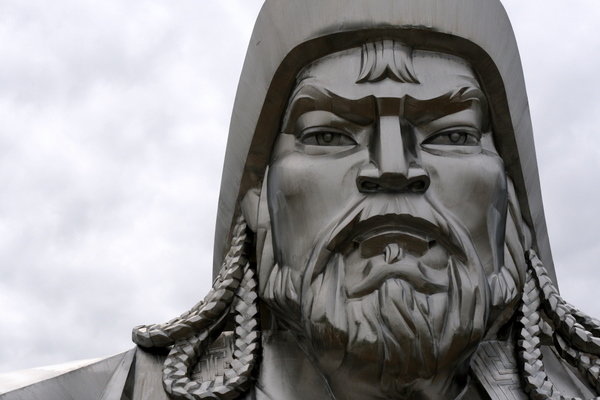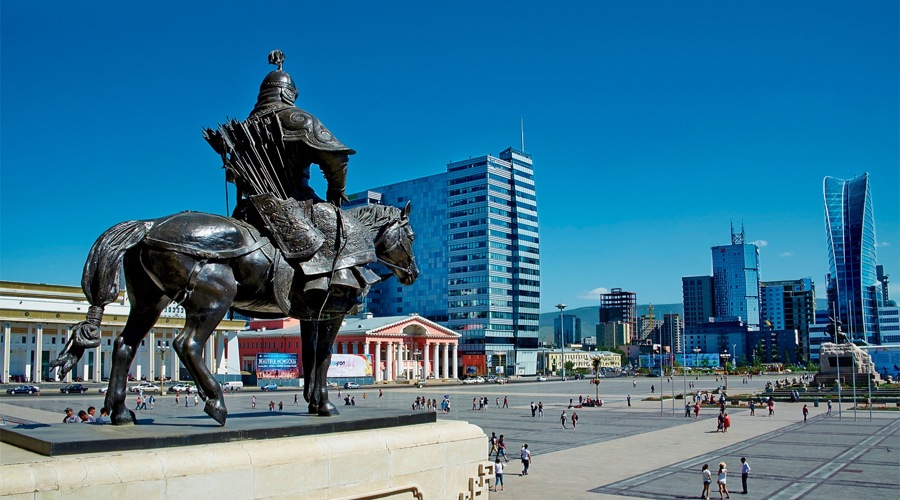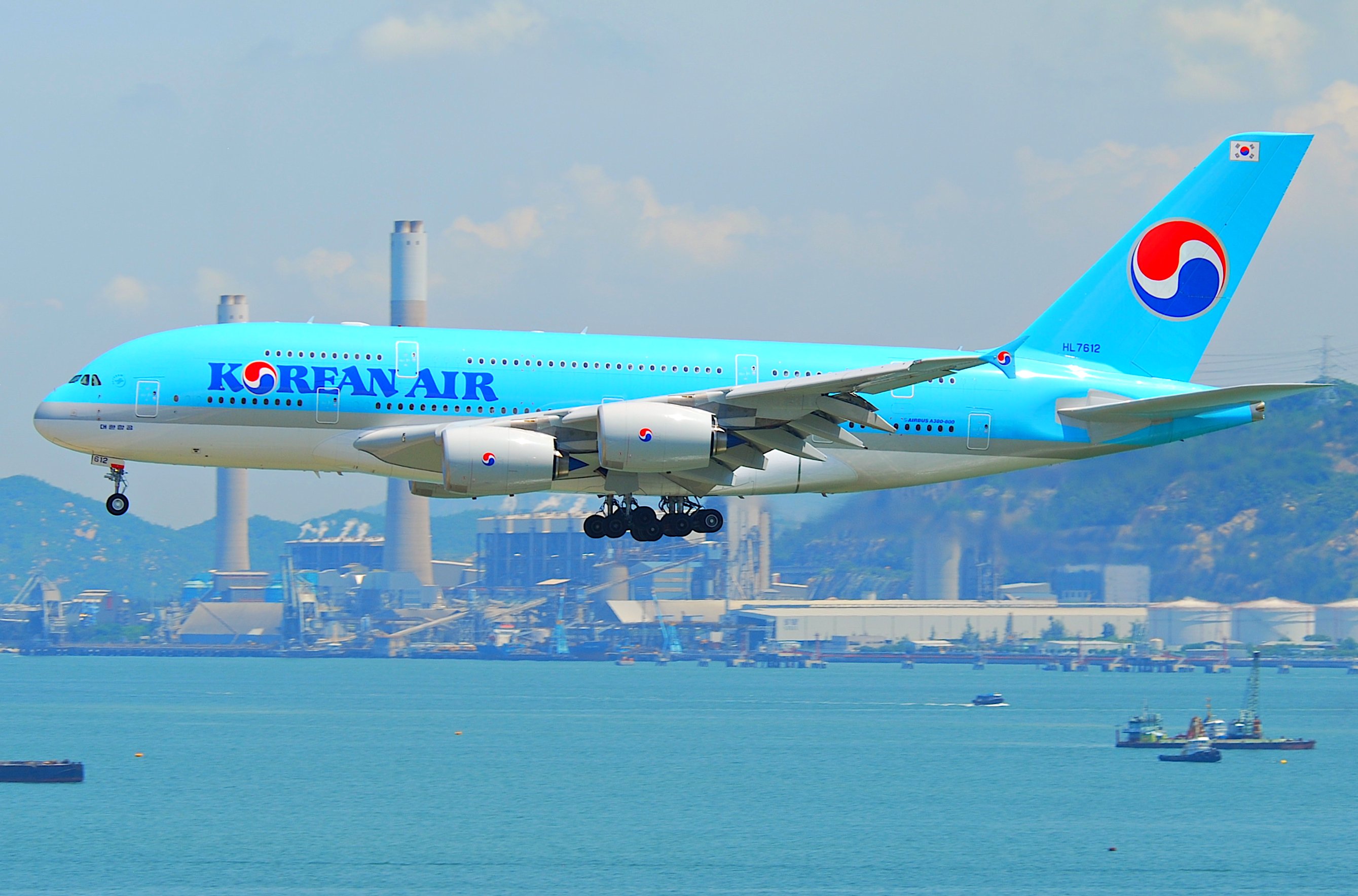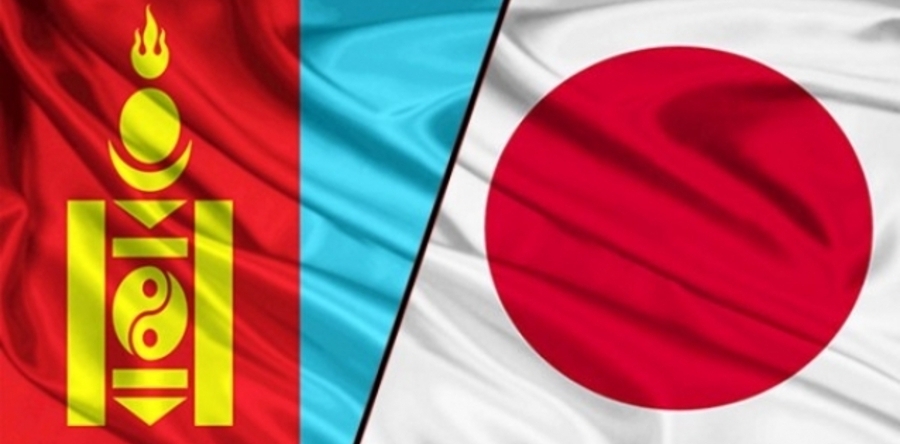Events
| Name | organizer | Where |
|---|---|---|
| MBCC “Doing Business with Mongolia seminar and Christmas Receptiom” Dec 10. 2025 London UK | MBCCI | London UK Goodman LLC |
NEWS

Snow covers over 60 pct of Mongolian territory www.xinhuanet.com
More than 60 percent of Mongolia's territory is currently covered by snow, the National Agency for Meteorology and Environmental Monitoring reported on Monday.
"At least 64 percent of Mongolia's territory is now blanketed by snow," the weather agency said, adding that as of Monday morning, snowfall is ongoing in five of the country's all 21 provinces.
Mongolia is renowned for its harsh winters, which are heavily influenced by the Siberian high-pressure system.
Last winter brought the heaviest snowfall in the country in five decades, leading to a severe dzud that resulted in the loss of millions of livestock.
Dzud is a Mongolian term referring to a huge lost of livestock due to frozen or snow-covered ground during a harsh winter.
This winter, most parts of the Asian country are forecast to experience colder temperatures than the long-term average, according to the weather agency.

Digital Transformation and Development of Artificial Intelligence Discussed www.montsame.mn
In commemoration of the centennial of the establishment of the modern banking system in Mongolia, the Central Bank of Mongolia hosted an Academic Conference under the theme “Objectives, Governance, Operational Directions, and Legal Reforms of the Central Bank of Mongolia” on December 23, 2024.
During the Conference, different governance models were introduced using the examples of the Monetary Policy Committee and the Supervisory Committee. Also, the Conference discussed and presented the results of the Best Paper Competition among university students following the International Finance Conference held in July 2024. More than 30 reports were submitted for the Competition, touching on topics, such as the Central Bank's operations, legal regulation, governance, independence, legal reforms, and economic conditions.
Furthermore, scholars, experts, and students from universities, and financial and legal institutions, including the Supreme Court of Mongolia, the School of Law at the National University of Mongolia, and the University of Finance and Economics, discussed digital transformation, artificial intelligence, and its development. Specifically, the attendees were engaged in presentations on “How the Operations of the Central Bank of Mongolia Affect the Country's Economy” and “Impact of Fluctuations in Exchange Rates on Electoral Cycles.”
In his presentation on “The Impact of Legally Binding Decisions Made by the Central Bank of Mongolia on Private Legal Relations,” Lawyer, Dr. S. Enkhbayar emphasized that the legal foundation for the Central Bank’s operations plays a crucial role in its effectiveness. Mr. Enkhbayar also highlighted that having the Central Bank’s operations regulated by the Constitution ensures a strong legal foundation. Although the Central Bank’s legal framework is not explicitly enshrined in the Constitution of Mongolia, its functions are specified in the National Security Concept. Mr. Enkhbayar cited international examples where the Central Bank’s operations are independent of government control, enshrined in constitutional law, and legally protected. He further emphasized that according to Article 4, Section 4.2 of the Law of Mongolia on Central Bank, one of the key responsibilities of the Central Bank is ensuring the financial stability of commercial banks.
The presentations were discussed and judged in two categories: researchers and students. As a result, 11 research were selected for the Best Paper.

Mongolian and Japanese Airports to Exchange Best Practices and Enhance Service Quality www.montsame.mn
The “Khushigiin Khundii Airport” State Owned Limited Liability Company of Mongolia, Narita International Airport Corporation of Japan, and the Japan Airport Terminal Co., Ltd. signed a Memorandum of Understanding on Cooperation on December 20, 2024.
The three parties will jointly organize training to improve the professional skills and service quality of employees of Chinggis Khaan International Airport of Mongolia. As Tsenguuun Lamjav, Chief Executive Officer of “Khushigiin Khundii Airport” State Owned Limited Liability Company of Mongolia, clarified, Chinggis Khaan International Airport of Mongolia has undergone an audit by Skytrax, an international organization that rates airlines and airports worldwide, and has been awarded a 4-star rating. Moreover, this year, the Airport welcomed its 2 millionth passenger. In essence, the Chinggis Khaan International Airport's capacity for passenger handling and service quality has reached international standards. To maintain this level, continue our successes, and further improve, we have decided to learn from the advanced management, best practices, and know-how of Narita and Haneda airports, two of Japan's world-renowned top 10 airports.
As part of the collaboration, there will be an exchange program involving the transfer of Narita Airport staff to Mongolia and the provision of both long-term and short-term training in Japan for employees of Chinggis Khaan International Airport.
In his speech at the Signing Ceremony, Igawahara Masaru, the Ambassador Extraordinary and Plenipotentiary of Japan to Mongolia, said, “It is worth mentioning that the two shareholder companies of Chinggis Khaan International Airport of Mongolia, constructed with a soft loan from the Government of Japan, are actively working towards improving the airport's operations. I would like to express my satisfaction that the number of passengers this year has exceeded expectations, reaching two million, which is comparable to international airports such as Osaka, Frankfurt, and Paris.”
As of November 30, 2024, Chinggis Khaan International Airport has served 1,633,770 foreign and Mongolian passengers, and 389,627 domestic passengers, totaling 2,023,397 passengers. Having served over 2 million passengers in a single year marks a milestone in Mongolia's civil aviation history.

Mongolia's Sovereign Wealth Fund Renamed “Chinggis Fund” www.montsame.mn
During its irregular session on December 20, 2024, the Government of Mongolia made a decision to adopt a Resolution on Taking Several Measures on Mongolia's Sovereign Wealth Fund.
Through the Resolution, the Government instructed Minister of Mongolia and Chairman of the Cabinet Secretariat of Government Uchral Nyam-Osor and Minister of Finance Javkhlan Bold to distribute the generated revenue of the 2024 Sovereign Wealth Fund to the Savings Fund, Development Fund, and Future Heritage Fund, and to work to achieve the predetermined targets for 2025. Moreover, in accordance with the Government Resolution, the Sovereign Wealth Fund will be renamed “Chinggis Fund,” in honor of Great Emperor Chinggis Khaan.
Deputy Prime Minister of Mongolia and Minister of Economy and Development Gantumur Luvsannyam was tasked with researching ways to finance projects and programs to reduce air pollution through the Development Fund and submitting it to the Government of Mongolia.

Defense Ministry of Mongolia to supply meat to Vietnamese army www.akipress.com
Defense Minister Byambatsogt Sandag held a bilateral meeting with Defense Minister of Vietnam Phan Van Giang in Hanoi on Saturday.
At the meeting, the parties exchanged practical proposals to take the development of the defense complex of the two countries to a new level.
The considered supplying meat from the Mongolian Armed Forces to the Vietnamese Armed Forces and receive rice in exchange, jointly conduct and improve weapons and technical research to develop the defense industry of Mongolia, and strengthen the military personnel of both sides by exchanging experiences in peacekeeping, culture, sports and art.
To implement these tasks, it was decided to establish a joint working group.
"The defense sector will be the first to take advantage of the legal opportunity to export Mongolian meat to Vietnam. The state is responsible for supporting the army, but the Ministry of Defense will make the armed forces self-sufficient," the Mongolian Defense Minister said.
Mongolia issues warning over blizzards www.xinhuanet.com
Mongolia's National Emergency Management Agency (NEMA) has issued a severe weather warning for several regions, predicting strong winds and blizzards to start on Monday night.
The blizzards are expected to impact the western, central, and southern Gobi provinces over the next two days, resulting in poor road visibility and slippery conditions, the NEMA said on Monday, urging citizens, especially nomadic herders and drivers, to exercise caution and take preventive measures against potential disasters.
In addition, more than 60 percent of Mongolia's total territory is already covered in snow, according to the National Agency for Meteorology and Environmental Monitoring.
Mongolia, known for its harsh continental climate, frequently experiences extreme weather throughout the year. As one of the few remaining nomadic societies in the world, the country is particularly vulnerable to abrupt and severe weather events.
The combination of frigid temperatures and unpredictable weather patterns often leads to devastating consequences for both human and animal populations.
In a tragic example of such risks, over 10 people, mainly nomadic herders, lost their lives in November 2023 due to heavy snow and blizzards in the central province of Tuv and the eastern province of Sukhbaatar.

Mongolia's power grid load rises significantly www.xinhuanet.com
Mongolia's electricity consumption has surged significantly during the ongoing cold winter season, the country's Energy Regulatory Commission announced on Monday.
The national power grid reached a peak load of 1,614 megawatts (MW) on Sunday evening, an 18 MW increase compared to the same period last year, the commission said, urging the public to conserve energy.
To mitigate the risk of a complete blackout, Mongolia has been forced to implement power rationing measures. Specifically, Ulan Bator, the capital city, which is home to nearly half of Mongolia's 3.5 million population, has introduced measures to limit power usage by district and for several hours each day since early this month.
Currently, around 80 percent of Mongolia's electricity is generated domestically, with the remaining 20 percent imported.
Mongolia's climate is strongly influenced by its continental location, characterized by long, freezing winters and brief, warm summers.

Mongolia marks centennial with a new course for change www.eastasiaforum.org
Mongolia celebrated the centenary of its first 1924 constitution in November 2024, which transformed the country from a religious monarchy into the People's Republic of Mongolia. Following parliamentary elections in June 2024, the country has launched ‘Parliament 2.0’, an agenda inspired by key ideals within Mongolia’s 1924 constitution and focusing on human rights, technological advancement and legal transparency. While the country has made significant democratic progress since its 1992 post-Soviet constitution, challenges remain, particularly regarding corruption and resource management. Despite these obstacles, Mongolia continues to strengthen its democratic institutions and seeks to expand its global diplomatic and trading relationships beyond its immediate neighbours.
With Mongolia having celebrated the centenary of its first constitution on 26 November 2024, the nation has pledged to modernise its governance and entrench democratic norms and practices during a time of geopolitical division in East Asia. Mongolia is considering how the original constitution’s ideals of sovereignty, equality and modernisation, which have provided the foundation for the country’s development in the past century, can be promoted in a contemporary setting.
Mongolia’s path to modern statehood began in 1924, when its first socialist constitution transformed the country from a religious monarchy into the People’s Republic of Mongolia. The constitution asserted sovereignty and established the government of Mongolia through the Great People’s Assembly, marking a groundbreaking shift toward unified leadership. Women gained equal rights, the state and religion were officially separated and education became free for all. Beyond changing who held power, this constitution advanced progressive ideas for its time.
The 1924 constitution laid the groundwork for Mongolia’s modernisation. Over the course of a century, Mongolia’s constitutional framework has evolved in response to shifting societal, political and economic conditions, with significant changes adopted in 1940, 1960 and 1992. The latter, adopted in the wake of the Soviet Union’s collapse and the country’s transition to democracy, declared Mongolia a sovereign, independent and democratic republic. This transformation aligned with the UN Universal Declaration of Human Rights, ensuring the protection of fundamental rights and freedoms.
Constitutional amendments in 1999, 2000, 2019 and 2022 have continued to shape the country’s democratic landscape. In 2023, further reforms increased the size of the State Great Khural, Mongolia’s unicameral parliament, from 76 to 126 members, of which nearly 40 per cent are elected through proportional representation. The changes passed with broad cross-party support, underscoring a national consensus on the importance of promoting unity and advancing democracy.
Following Mongolia’s parliamentary elections on 28 June 2024 and the formation of a new cross-party government, the 1924 constitution’s legacy continues to inspire reform efforts, including the ‘Parliament 2.0’ agenda unveiled on 2 October 2024 by the Speaker of Parliament Amarbayasgalan Dashzegve.
This agenda is based on three pillars, aiming to modernise Mongolia’s legislative process and governance structure. The first pillar focuses on integrating human rights into every legislative decision, while the second pillar aims to ensure that evolving advancements such as digital currencies and blockchain technology are reflected in legal and regulatory frameworks. The third pillar focuses on simplifying legal language to enhance transparency, reduce ambiguity and differentiate between matters best addressed by law and those that require specific regulatory guidance.
The significance of the ‘Parliament 2.0’ agenda lies in its recognition that democratic institutions must evolve to remain effective. Mongolia is seeking to demonstrate how a nation can adapt its governance framework to better meet contemporary challenges, while remaining true to core values.
But progress rarely takes a linear path. For example, there remains a need to tackle the long-term issue of corruption, as demonstrated in December 2022 when protestors took to the streets following allegations over corruption linked to the country’s coal trade with China.
Despite facing challenges, Mongolia remains committed to democracy and extending its diplomatic and trade links beyond its immediate neighbourhood. For example, a new draft law to improve freedom of the press has been welcomed as a positive sign by Reporters Without Borders, who say its passage would demonstrate a ‘commitment to press freedom’.
Mongolia’s challenge will be staying true to its democratic path while its economic success, at least in the short-term, remains closely reliant on trade with its nearest neighbours. While Mongolia still needs to entrench democratic norms at all levels of society, the new set of legislative and governance reforms is a promising sign as the country charts its course in the years ahead.
By: Jack Weatherford
Jack Weatherford is the DeWitt Wallace Professor of Anthropology at Macalester College, Minnesota.

E-Mart opens fifth store in Ulaanbaatar, Mongolia, targeting K-food craze www.biz.chosun.com
On the 20th, E-Mart announced that it will open its fifth franchise store, the Dragon Terminal location, in Ulaanbaatar, the capital of Mongolia. This comes 1 year and 3 months after the opening of the fourth store on Sept. 4 last year.
Ulaanbaatar is the capital of Mongolia. It is a place where Korean culture has spread so much that it is referred to as the 'Montan (Mongolia + Dongtan) new city,' where E-Mart operates four large discount store locations.
The newly opened fifth store is configured as a small-format store. E-Mart plans to focus on opening small-format stores in downtown Ulaanbaatar while implementing a two-track strategy of launching large stores like shopping malls in the outer new towns.
The fifth store is located on the first floor of the newly built shopping mall at Dragon Bus Terminal, which is the largest commercial area and a transportation hub in the west. Covering an area of 1,093 square meters (about 330 pyeong), the fifth store will increase the area for processed food to comprise about 70% of the total space and sell convenience products such as simple travel items and small-sized Korean snacks and drinks for terminal customers.
Reflecting the K-food craze, products from Korea have been displayed throughout the store. In particular, a deli and bakery featuring Korean-style menus such as gimbap, tteokbokki, and fried chicken have been emphasized.
The No Brand store is placed at the entrance as a shop-in-shop format. According to E-Mart, sales from the No Brand store in Mongolia from January to November this year increased by 24%. This decision reflects the high level of response.
Having entered the Mongolian market for nine years, E-Mart's sales continue to show significant growth each year. Last year, sales from E-Mart in Mongolia increased by 11% compared to the previous year. This year, E-Mart anticipates an even higher sales growth rate of about 19%.
Choi Jong-geun, head of E-Mart's overseas operations, noted that 'E-Mart aims to open more than 10 additional stores in Mongolia by 2030' and emphasized that 'it will establish itself as a leading discount store in Mongolia and spread K-retail.'

Japan and Mongolia Forge Historic Defense Pact Under Third Neighbor Strategy www.armyrecognition.com
On December 18, 2024, Japan and Mongolia formalized a historic agreement enabling the transfer of defense equipment and technology between the two nations. The accord was signed by Japan's Ambassador to Ulaanbaatar, Masaru Ogasawara, and Mongolia's Minister of Defense, Sandagiin Byambatsogt, highlighting both countries' commitment to strengthening defense cooperation. Japan's Ministry of Foreign Affairs clarified that the agreement would facilitate joint defense projects aimed at promoting international peace and stability while ensuring strict controls to prevent misuse or unauthorized transfer to third parties.
The agreement, signed on December 18, 2024, is expected to include the transfer of several advanced defense systems tailored to Mongolia’s strategic needs. Among these could be three-dimensional surveillance radars, akin to the modernized FPS-3 radar, which provides precise detection of ground and aerial targets. Similar systems have been provided by Japan to partners like the Philippines (under a 2016 agreement) and Vietnam (2021) and would be particularly effective for monitoring Mongolia’s extensive borders with Russia and China.
Reconnaissance drones equipped with optical and infrared sensors may also be part of the deal. Platforms like the Yamaha RMAX drone, used for tactical missions, would be well-suited for surveillance of remote or hard-to-access border areas. In 2019, Japan supplied similar systems to Indonesia under its maritime defense capacity-building program, showcasing its expertise in this domain.
The agreement might further include secure communication systems and command and control (C2) solutions similar to those provided to India after their 2015 accord. These technologies, critical for efficient military coordination, would enhance Mongolia's ability to address local threats while fostering interoperability with regional partners. Additionally, cybersecurity tools, like those shared with Singapore in 2018, could be included to safeguard Mongolia’s critical military infrastructure from potential cyberattacks.
Specialized military vehicles, such as the Toyota Mega Cruiser, renowned for their mobility and durability in challenging environments, could also be part of the package. Japan shared such equipment with the Philippines in 2020 to improve rapid response capabilities. Through this agreement with Mongolia, Japan continues to leverage its regional defense strategy, strengthening bilateral alliances since it relaxed its restrictions on military equipment exports in 2014. The agreement is set to take effect in 2025, accompanied by training and maintenance programs to ensure the operational readiness of Mongolia’s armed forces.
Military relations between Japan and Mongolia have intensified in recent years, reflecting a shared desire to enhance cooperation in defense and security. This trend aligns with Mongolia’s "third neighbor" strategy, aimed at diversifying partnerships beyond its two major neighbors, Russia and China.
Furthermore, Mongolia has been actively participating in NATO partnership programs since 2012, particularly through the Defense Education Enhancement Program (DEEP), which aims to modernize Mongolia’s military training system and improve interoperability with allied forces.
Mongolia’s armed forces consist of approximately 10,000 active-duty personnel and 137,000 reservists, primarily organized into land forces with a limited air force component. The country allocates about 1.4% of its GDP to defense. Since the 2000s, Mongolia has actively contributed to international peacekeeping missions, including operations in Afghanistan, Kosovo, and Africa, bolstering its international presence and commitment to global security.
- «
- 1
- 2
- 3
- 4
- 5
- 6
- 7
- 8
- 9
- 10
- 11
- 12
- 13
- 14
- 15
- 16
- 17
- 18
- 19
- 20
- 21
- 22
- 23
- 24
- 25
- 26
- 27
- 28
- 29
- 30
- 31
- 32
- 33
- 34
- 35
- 36
- 37
- 38
- 39
- 40
- 41
- 42
- 43
- 44
- 45
- 46
- 47
- 48
- 49
- 50
- 51
- 52
- 53
- 54
- 55
- 56
- 57
- 58
- 59
- 60
- 61
- 62
- 63
- 64
- 65
- 66
- 67
- 68
- 69
- 70
- 71
- 72
- 73
- 74
- 75
- 76
- 77
- 78
- 79
- 80
- 81
- 82
- 83
- 84
- 85
- 86
- 87
- 88
- 89
- 90
- 91
- 92
- 93
- 94
- 95
- 96
- 97
- 98
- 99
- 100
- 101
- 102
- 103
- 104
- 105
- 106
- 107
- 108
- 109
- 110
- 111
- 112
- 113
- 114
- 115
- 116
- 117
- 118
- 119
- 120
- 121
- 122
- 123
- 124
- 125
- 126
- 127
- 128
- 129
- 130
- 131
- 132
- 133
- 134
- 135
- 136
- 137
- 138
- 139
- 140
- 141
- 142
- 143
- 144
- 145
- 146
- 147
- 148
- 149
- 150
- 151
- 152
- 153
- 154
- 155
- 156
- 157
- 158
- 159
- 160
- 161
- 162
- 163
- 164
- 165
- 166
- 167
- 168
- 169
- 170
- 171
- 172
- 173
- 174
- 175
- 176
- 177
- 178
- 179
- 180
- 181
- 182
- 183
- 184
- 185
- 186
- 187
- 188
- 189
- 190
- 191
- 192
- 193
- 194
- 195
- 196
- 197
- 198
- 199
- 200
- 201
- 202
- 203
- 204
- 205
- 206
- 207
- 208
- 209
- 210
- 211
- 212
- 213
- 214
- 215
- 216
- 217
- 218
- 219
- 220
- 221
- 222
- 223
- 224
- 225
- 226
- 227
- 228
- 229
- 230
- 231
- 232
- 233
- 234
- 235
- 236
- 237
- 238
- 239
- 240
- 241
- 242
- 243
- 244
- 245
- 246
- 247
- 248
- 249
- 250
- 251
- 252
- 253
- 254
- 255
- 256
- 257
- 258
- 259
- 260
- 261
- 262
- 263
- 264
- 265
- 266
- 267
- 268
- 269
- 270
- 271
- 272
- 273
- 274
- 275
- 276
- 277
- 278
- 279
- 280
- 281
- 282
- 283
- 284
- 285
- 286
- 287
- 288
- 289
- 290
- 291
- 292
- 293
- 294
- 295
- 296
- 297
- 298
- 299
- 300
- 301
- 302
- 303
- 304
- 305
- 306
- 307
- 308
- 309
- 310
- 311
- 312
- 313
- 314
- 315
- 316
- 317
- 318
- 319
- 320
- 321
- 322
- 323
- 324
- 325
- 326
- 327
- 328
- 329
- 330
- 331
- 332
- 333
- 334
- 335
- 336
- 337
- 338
- 339
- 340
- 341
- 342
- 343
- 344
- 345
- 346
- 347
- 348
- 349
- 350
- 351
- 352
- 353
- 354
- 355
- 356
- 357
- 358
- 359
- 360
- 361
- 362
- 363
- 364
- 365
- 366
- 367
- 368
- 369
- 370
- 371
- 372
- 373
- 374
- 375
- 376
- 377
- 378
- 379
- 380
- 381
- 382
- 383
- 384
- 385
- 386
- 387
- 388
- 389
- 390
- 391
- 392
- 393
- 394
- 395
- 396
- 397
- 398
- 399
- 400
- 401
- 402
- 403
- 404
- 405
- 406
- 407
- 408
- 409
- 410
- 411
- 412
- 413
- 414
- 415
- 416
- 417
- 418
- 419
- 420
- 421
- 422
- 423
- 424
- 425
- 426
- 427
- 428
- 429
- 430
- 431
- 432
- 433
- 434
- 435
- 436
- 437
- 438
- 439
- 440
- 441
- 442
- 443
- 444
- 445
- 446
- 447
- 448
- 449
- 450
- 451
- 452
- 453
- 454
- 455
- 456
- 457
- 458
- 459
- 460
- 461
- 462
- 463
- 464
- 465
- 466
- 467
- 468
- 469
- 470
- 471
- 472
- 473
- 474
- 475
- 476
- 477
- 478
- 479
- 480
- 481
- 482
- 483
- 484
- 485
- 486
- 487
- 488
- 489
- 490
- 491
- 492
- 493
- 494
- 495
- 496
- 497
- 498
- 499
- 500
- 501
- 502
- 503
- 504
- 505
- 506
- 507
- 508
- 509
- 510
- 511
- 512
- 513
- 514
- 515
- 516
- 517
- 518
- 519
- 520
- 521
- 522
- 523
- 524
- 525
- 526
- 527
- 528
- 529
- 530
- 531
- 532
- 533
- 534
- 535
- 536
- 537
- 538
- 539
- 540
- 541
- 542
- 543
- 544
- 545
- 546
- 547
- 548
- 549
- 550
- 551
- 552
- 553
- 554
- 555
- 556
- 557
- 558
- 559
- 560
- 561
- 562
- 563
- 564
- 565
- 566
- 567
- 568
- 569
- 570
- 571
- 572
- 573
- 574
- 575
- 576
- 577
- 578
- 579
- 580
- 581
- 582
- 583
- 584
- 585
- 586
- 587
- 588
- 589
- 590
- 591
- 592
- 593
- 594
- 595
- 596
- 597
- 598
- 599
- 600
- 601
- 602
- 603
- 604
- 605
- 606
- 607
- 608
- 609
- 610
- 611
- 612
- 613
- 614
- 615
- 616
- 617
- 618
- 619
- 620
- 621
- 622
- 623
- 624
- 625
- 626
- 627
- 628
- 629
- 630
- 631
- 632
- 633
- 634
- 635
- 636
- 637
- 638
- 639
- 640
- 641
- 642
- 643
- 644
- 645
- 646
- 647
- 648
- 649
- 650
- 651
- 652
- 653
- 654
- 655
- 656
- 657
- 658
- 659
- 660
- 661
- 662
- 663
- 664
- 665
- 666
- 667
- 668
- 669
- 670
- 671
- 672
- 673
- 674
- 675
- 676
- 677
- 678
- 679
- 680
- 681
- 682
- 683
- 684
- 685
- 686
- 687
- 688
- 689
- 690
- 691
- 692
- 693
- 694
- 695
- 696
- 697
- 698
- 699
- 700
- 701
- 702
- 703
- 704
- 705
- 706
- 707
- 708
- 709
- 710
- 711
- 712
- 713
- 714
- 715
- 716
- 717
- 718
- 719
- 720
- 721
- 722
- 723
- 724
- 725
- 726
- 727
- 728
- 729
- 730
- 731
- 732
- 733
- 734
- 735
- 736
- 737
- 738
- 739
- 740
- 741
- 742
- 743
- 744
- 745
- 746
- 747
- 748
- 749
- 750
- 751
- 752
- 753
- 754
- 755
- 756
- 757
- 758
- 759
- 760
- 761
- 762
- 763
- 764
- 765
- 766
- 767
- 768
- 769
- 770
- 771
- 772
- 773
- 774
- 775
- 776
- 777
- 778
- 779
- 780
- 781
- 782
- 783
- 784
- 785
- 786
- 787
- 788
- 789
- 790
- 791
- 792
- 793
- 794
- 795
- 796
- 797
- 798
- 799
- 800
- 801
- 802
- 803
- 804
- 805
- 806
- 807
- 808
- 809
- 810
- 811
- 812
- 813
- 814
- 815
- 816
- 817
- 818
- 819
- 820
- 821
- 822
- 823
- 824
- 825
- 826
- 827
- 828
- 829
- 830
- 831
- 832
- 833
- 834
- 835
- 836
- 837
- 838
- 839
- 840
- 841
- 842
- 843
- 844
- 845
- 846
- 847
- 848
- 849
- 850
- 851
- 852
- 853
- 854
- 855
- 856
- 857
- 858
- 859
- 860
- 861
- 862
- 863
- 864
- 865
- 866
- 867
- 868
- 869
- 870
- 871
- 872
- 873
- 874
- 875
- 876
- 877
- 878
- 879
- 880
- 881
- 882
- 883
- 884
- 885
- 886
- 887
- 888
- 889
- 890
- 891
- 892
- 893
- 894
- 895
- 896
- 897
- 898
- 899
- 900
- 901
- 902
- 903
- 904
- 905
- 906
- 907
- 908
- 909
- 910
- 911
- 912
- 913
- 914
- 915
- 916
- 917
- 918
- 919
- 920
- 921
- 922
- 923
- 924
- 925
- 926
- 927
- 928
- 929
- 930
- 931
- 932
- 933
- 934
- 935
- 936
- 937
- 938
- 939
- 940
- 941
- 942
- 943
- 944
- 945
- 946
- 947
- 948
- 949
- 950
- 951
- 952
- 953
- 954
- 955
- 956
- 957
- 958
- 959
- 960
- 961
- 962
- 963
- 964
- 965
- 966
- 967
- 968
- 969
- 970
- 971
- 972
- 973
- 974
- 975
- 976
- 977
- 978
- 979
- 980
- 981
- 982
- 983
- 984
- 985
- 986
- 987
- 988
- 989
- 990
- 991
- 992
- 993
- 994
- 995
- 996
- 997
- 998
- 999
- 1000
- 1001
- 1002
- 1003
- 1004
- 1005
- 1006
- 1007
- 1008
- 1009
- 1010
- 1011
- 1012
- 1013
- 1014
- 1015
- 1016
- 1017
- 1018
- 1019
- 1020
- 1021
- 1022
- 1023
- 1024
- 1025
- 1026
- 1027
- 1028
- 1029
- 1030
- 1031
- 1032
- 1033
- 1034
- 1035
- 1036
- 1037
- 1038
- 1039
- 1040
- 1041
- 1042
- 1043
- 1044
- 1045
- 1046
- 1047
- 1048
- 1049
- 1050
- 1051
- 1052
- 1053
- 1054
- 1055
- 1056
- 1057
- 1058
- 1059
- 1060
- 1061
- 1062
- 1063
- 1064
- 1065
- 1066
- 1067
- 1068
- 1069
- 1070
- 1071
- 1072
- 1073
- 1074
- 1075
- 1076
- 1077
- 1078
- 1079
- 1080
- 1081
- 1082
- 1083
- 1084
- 1085
- 1086
- 1087
- 1088
- 1089
- 1090
- 1091
- 1092
- 1093
- 1094
- 1095
- 1096
- 1097
- 1098
- 1099
- 1100
- 1101
- 1102
- 1103
- 1104
- 1105
- 1106
- 1107
- 1108
- 1109
- 1110
- 1111
- 1112
- 1113
- 1114
- 1115
- 1116
- 1117
- 1118
- 1119
- 1120
- 1121
- 1122
- 1123
- 1124
- 1125
- 1126
- 1127
- 1128
- 1129
- 1130
- 1131
- 1132
- 1133
- 1134
- 1135
- 1136
- 1137
- 1138
- 1139
- 1140
- 1141
- 1142
- 1143
- 1144
- 1145
- 1146
- 1147
- 1148
- 1149
- 1150
- 1151
- 1152
- 1153
- 1154
- 1155
- 1156
- 1157
- 1158
- 1159
- 1160
- 1161
- 1162
- 1163
- 1164
- 1165
- 1166
- 1167
- 1168
- 1169
- 1170
- 1171
- 1172
- 1173
- 1174
- 1175
- 1176
- 1177
- 1178
- 1179
- 1180
- 1181
- 1182
- 1183
- 1184
- 1185
- 1186
- 1187
- 1188
- 1189
- 1190
- 1191
- 1192
- 1193
- 1194
- 1195
- 1196
- 1197
- 1198
- 1199
- 1200
- 1201
- 1202
- 1203
- 1204
- 1205
- 1206
- 1207
- 1208
- 1209
- 1210
- 1211
- 1212
- 1213
- 1214
- 1215
- 1216
- 1217
- 1218
- 1219
- 1220
- 1221
- 1222
- 1223
- 1224
- 1225
- 1226
- 1227
- 1228
- 1229
- 1230
- 1231
- 1232
- 1233
- 1234
- 1235
- 1236
- 1237
- 1238
- 1239
- 1240
- 1241
- 1242
- 1243
- 1244
- 1245
- 1246
- 1247
- 1248
- 1249
- 1250
- 1251
- 1252
- 1253
- 1254
- 1255
- 1256
- 1257
- 1258
- 1259
- 1260
- 1261
- 1262
- 1263
- 1264
- 1265
- 1266
- 1267
- 1268
- 1269
- 1270
- 1271
- 1272
- 1273
- 1274
- 1275
- 1276
- 1277
- 1278
- 1279
- 1280
- 1281
- 1282
- 1283
- 1284
- 1285
- 1286
- 1287
- 1288
- 1289
- 1290
- 1291
- 1292
- 1293
- 1294
- 1295
- 1296
- 1297
- 1298
- 1299
- 1300
- 1301
- 1302
- 1303
- 1304
- 1305
- 1306
- 1307
- 1308
- 1309
- 1310
- 1311
- 1312
- 1313
- 1314
- 1315
- 1316
- 1317
- 1318
- 1319
- 1320
- 1321
- 1322
- 1323
- 1324
- 1325
- 1326
- 1327
- 1328
- 1329
- 1330
- 1331
- 1332
- 1333
- 1334
- 1335
- 1336
- 1337
- 1338
- 1339
- 1340
- 1341
- 1342
- 1343
- 1344
- 1345
- 1346
- 1347
- 1348
- 1349
- 1350
- 1351
- 1352
- 1353
- 1354
- 1355
- 1356
- 1357
- 1358
- 1359
- 1360
- 1361
- 1362
- 1363
- 1364
- 1365
- 1366
- 1367
- 1368
- 1369
- 1370
- 1371
- 1372
- 1373
- 1374
- 1375
- 1376
- 1377
- 1378
- 1379
- 1380
- 1381
- 1382
- 1383
- 1384
- 1385
- 1386
- 1387
- 1388
- 1389
- 1390
- 1391
- 1392
- 1393
- 1394
- 1395
- 1396
- 1397
- 1398
- 1399
- 1400
- 1401
- 1402
- 1403
- 1404
- 1405
- 1406
- 1407
- 1408
- 1409
- 1410
- 1411
- 1412
- 1413
- 1414
- 1415
- 1416
- 1417
- 1418
- 1419
- 1420
- 1421
- 1422
- 1423
- 1424
- 1425
- 1426
- 1427
- 1428
- 1429
- 1430
- 1431
- 1432
- 1433
- 1434
- 1435
- 1436
- 1437
- 1438
- 1439
- 1440
- 1441
- 1442
- 1443
- 1444
- 1445
- 1446
- 1447
- 1448
- 1449
- 1450
- 1451
- 1452
- 1453
- 1454
- 1455
- 1456
- 1457
- 1458
- 1459
- 1460
- 1461
- 1462
- 1463
- 1464
- 1465
- 1466
- 1467
- 1468
- 1469
- 1470
- 1471
- 1472
- 1473
- 1474
- 1475
- 1476
- 1477
- 1478
- 1479
- 1480
- 1481
- 1482
- 1483
- 1484
- 1485
- 1486
- 1487
- 1488
- 1489
- 1490
- 1491
- 1492
- 1493
- 1494
- 1495
- 1496
- 1497
- 1498
- 1499
- 1500
- 1501
- 1502
- 1503
- 1504
- 1505
- 1506
- 1507
- 1508
- 1509
- 1510
- 1511
- 1512
- 1513
- 1514
- 1515
- 1516
- 1517
- 1518
- 1519
- 1520
- 1521
- 1522
- 1523
- 1524
- 1525
- 1526
- 1527
- 1528
- 1529
- 1530
- 1531
- 1532
- 1533
- 1534
- 1535
- 1536
- 1537
- 1538
- 1539
- 1540
- 1541
- 1542
- 1543
- 1544
- 1545
- 1546
- 1547
- 1548
- 1549
- 1550
- 1551
- 1552
- 1553
- 1554
- 1555
- 1556
- 1557
- 1558
- 1559
- 1560
- 1561
- 1562
- 1563
- 1564
- 1565
- 1566
- 1567
- 1568
- 1569
- 1570
- 1571
- 1572
- 1573
- 1574
- 1575
- 1576
- 1577
- 1578
- 1579
- 1580
- 1581
- 1582
- 1583
- 1584
- 1585
- 1586
- 1587
- 1588
- 1589
- 1590
- 1591
- 1592
- 1593
- 1594
- 1595
- 1596
- 1597
- 1598
- 1599
- 1600
- 1601
- 1602
- 1603
- 1604
- 1605
- 1606
- 1607
- 1608
- 1609
- 1610
- 1611
- 1612
- 1613
- 1614
- 1615
- 1616
- 1617
- 1618
- 1619
- 1620
- 1621
- 1622
- 1623
- 1624
- 1625
- 1626
- 1627
- 1628
- 1629
- 1630
- 1631
- 1632
- 1633
- 1634
- 1635
- 1636
- 1637
- 1638
- 1639
- 1640
- 1641
- 1642
- 1643
- 1644
- 1645
- 1646
- 1647
- 1648
- 1649
- 1650
- 1651
- 1652
- 1653
- 1654
- 1655
- 1656
- 1657
- 1658
- 1659
- 1660
- 1661
- 1662
- 1663
- 1664
- 1665
- 1666
- 1667
- 1668
- 1669
- 1670
- 1671
- 1672
- 1673
- 1674
- 1675
- 1676
- 1677
- 1678
- 1679
- 1680
- 1681
- 1682
- 1683
- 1684
- 1685
- 1686
- 1687
- 1688
- 1689
- 1690
- 1691
- 1692
- 1693
- 1694
- 1695
- 1696
- 1697
- »






